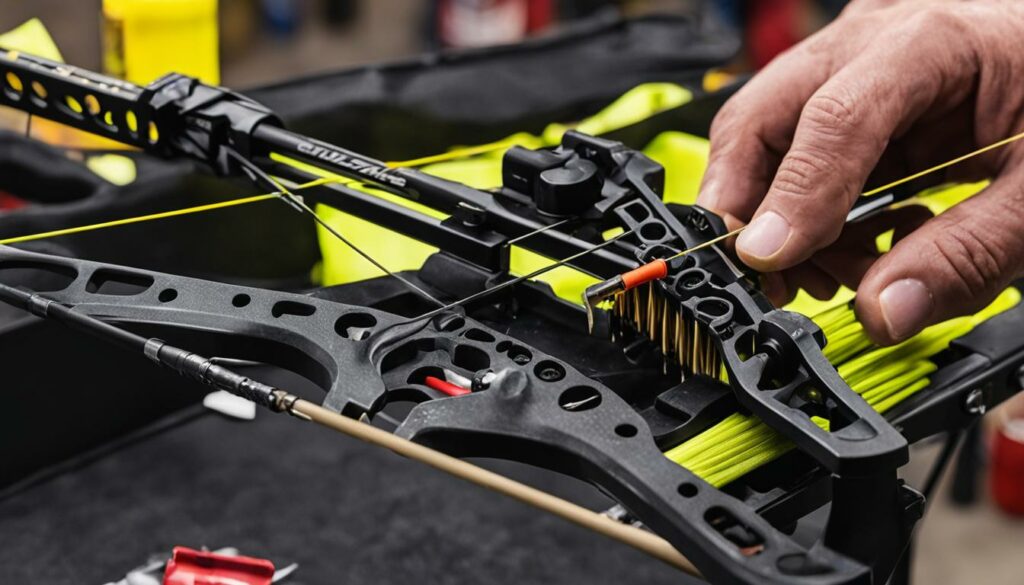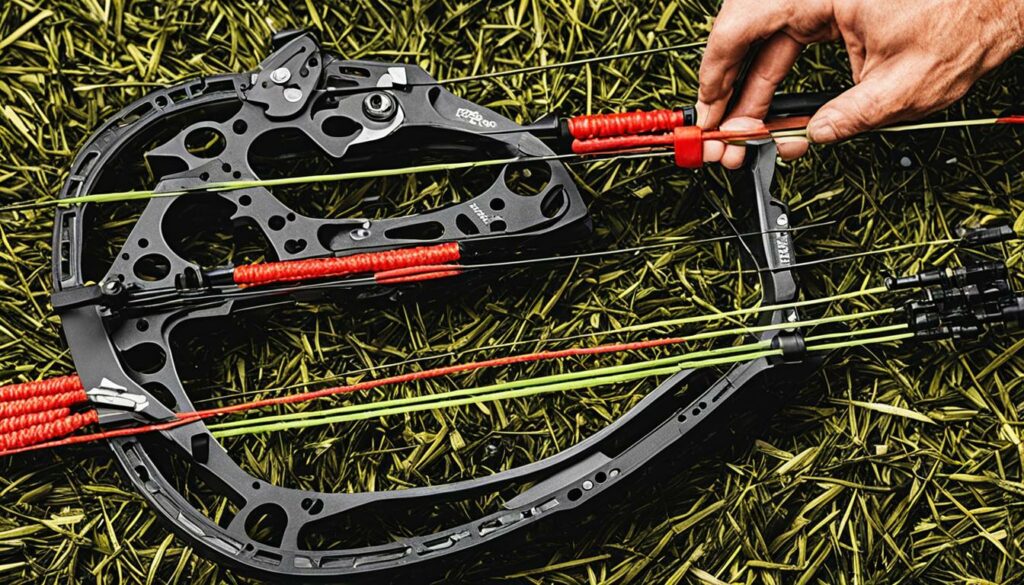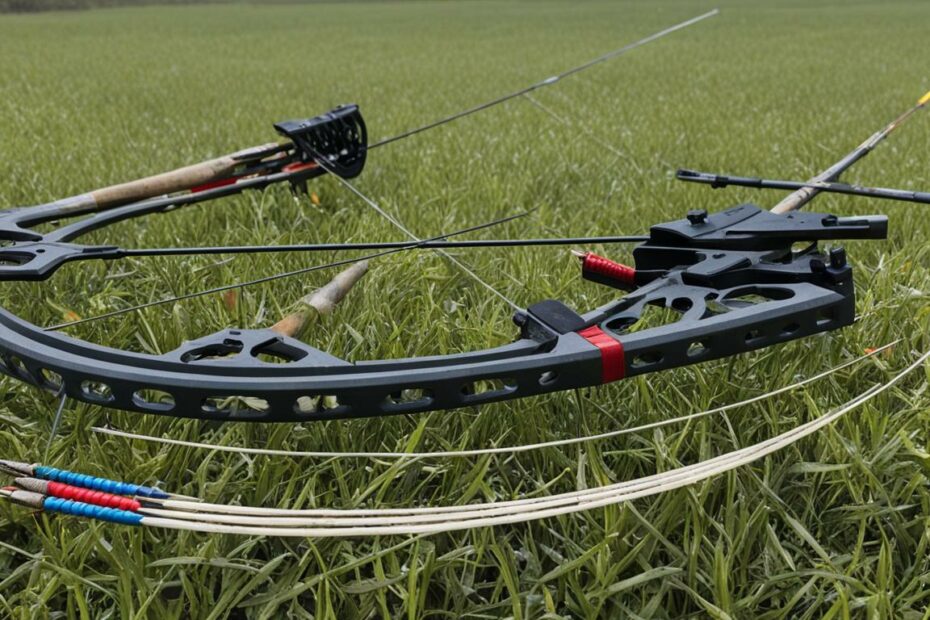Compound bow strings play a crucial role in the performance and accuracy of your bow. But how long do they last? The lifespan of compound bow strings can vary depending on various factors, including shooting frequency, maintenance practices, and environmental conditions.
While some manufacturers recommend replacing strings every two to three years, it’s important to note that this is just an average lifespan. The durability of compound bow strings can be influenced by factors such as the bow’s design, arrow weight, and the shooting environment.
Factors Affecting Compound Bow String Lifespan
One of the primary factors affecting the lifespan of compound bow strings is the frequency of bow usage. Extensive and frequent use can accelerate wear and tear on the strings.
Bowhunters or archers who regularly practice or participate in competitions may experience faster string degradation than occasional users.
The shooting environment plays a significant role in determining the durability of compound bow strings. Humid or dusty conditions can increase wear and tear on the strings, shortening their lifespan. These adverse conditions introduce moisture, dirt, and debris to the strings, potentially compromising their structural integrity.
The weight of the arrows is another crucial factor to consider. Shooting heavier arrows can strain the bowstrings, increasing wear and potential damage over time. Bows with higher arrow weights may have sturdier strings to accommodate the added stress.
The bow’s design, particularly the cam system, can also impact the lifespan of compound bow strings. Different cam designs may subject the strings to varying amounts of tension and friction, affecting the rate at which they wear down. Bows with smoother cam systems typically exert less strain on the strings, potentially extending their lifespan.
The choice of fibers used in bowstring materials can significantly impact the longevity of compound bow strings. Different fibers offer various characteristics, such as creep resistance, abrasion resistance, and overall tensile strength.
Some materials excel in certain areas, such as combating creep, but may be less durable in the long term. Bowhunters and archers should carefully consider these trade-offs and select the bowstring material that best suits their needs.
| Factors | Impact on Compound Bow String Lifespan |
|---|---|
| Frequency of bow usage | Higher usage can lead to accelerated wear and tear on the strings. |
| Shooting environment | Humid or dusty conditions can increase wear and tear on the strings. |
| Weight of the arrows | Heavier arrows can strain the strings, potentially shortening their lifespan. |
| Design of the bow | The bow’s cam system and overall design can affect the rate of string wear. |
| Fibers used in bowstring materials | Different fibers offer varying creep resistance, tensile strength, and durability characteristics. |
Signs that it’s Time to Replace Compound Bow Strings
Knowing when to replace compound bow strings is crucial for optimal performance and safety. Over time, bow strings can deteriorate due to wear and tear, exposure to harsh elements, or frequent use. Here are some signs that indicate it’s time to replace your compound bow strings:
- Visual Inspection: Regularly examine your bow strings for any signs of damage or wear. Look for frayed strands, dry or fuzzy areas, or any abnormalities that may compromise the integrity of the strings.
- Physical Feel: Run your fingers along the length of the strings to check for brittle or damaged spots. If you feel any roughness, irregularities, or weak areas, it indicates that the strings have weakened and should be replaced.
- Decreased Speed: If you notice a significant decrease in arrow speed or a noticeable drop in performance, it may be due to worn-out or overstretched bow strings. Aging strings can compromise the power and efficiency of your shots.
- Changes in Poundage or Timing: Pay attention to any changes in the poundage or timing of your bow. If the weight or timing seems inconsistent compared to your usual settings, it could result from stretched or damaged strings.
- String Creep: String creep refers to the unwanted movement of the string along the bow’s cam or idler wheel. Excessive string creep can affect accuracy and stability, indicating the need for new strings.
- Accuracy Issues: Worn-out bow strings could contribute if you’re experiencing inconsistent arrow groupings or accuracy problems despite proper form and technique. New strings can enhance accuracy and consistency.
| Signs that it’s Time to Replace Compound Bow Strings | Action Required |
|---|---|
| Visual Inspection | Replace if frayed, dry, or fuzzy areas are present |
| Physical Feel | Replace if brittle or damaged spots are detected |
| Decreased Speed | Replace to restore power and efficiency |
| Changes in Poundage or Timing | Replace to maintain consistent settings |
| String Creep | Replace to improve stability and accuracy |
| Accuracy Issues | Replace if consistent accuracy problems persist |
Maintenance Tips to Extend Compound Bow String Longevity
- Regular Waxing: Waxing your compound bow strings every three to four weeks is recommended. However, if you notice that the strings appear dry or fuzzy, more frequent waxing is necessary. Applying wax helps lubricate the strings and protects them from dirt and moisture, preventing premature wear and damage.
- Avoid Brushing: To prevent damage to your bow strings, avoid brushing them against clothing, branches, or any other gear. Brushing can cause fraying or snagging, compromising the integrity of the strings.
- Pre-Shooting Inspection: Before each shooting session or hunt, take the time to dust off your compound bow strings and inspect them for any signs of wear or damage. Look for frayed areas, loose strands, or any other abnormalities. Identifying and addressing issues before use can prevent further damage and ensure safe shooting.
- Climate-Controlled Storage: Storing your bow in a climate-controlled space helps protect the strings from rapid temperature or humidity changes. Extreme temperature fluctuations can cause the strings to expand or contract, potentially leading to performance issues or breakage. Store your bow in a cool, dry place to maintain the optimal condition of your strings.

| Maintenance Tips | Description |
|---|---|
| Regular Waxing | Apply wax every 3-4 weeks to lubricate the strings and protect them from dirt and moisture. |
| Avoid Brushing | Avoid brushing the strings against clothing, branches, or other gear to prevent fraying or damage. |
| Pre-Shooting Inspection | Dust off the strings and inspect for wear or damage before each shooting session or hunt. |
| Climate-Controlled Storage | Store the bow in a cool, dry place to prevent rapid temperature or humidity changes. |
How Often to Replace Compound Bow Strings
The frequency of replacing compound bow strings can vary depending on shooting frequency, shooting environment, and maintenance practices. As a general guideline, target bows should have their strings replaced yearly while hunting bows can typically go two years between replacements.
However, more frequent string changes may be necessary if you shoot more frequently or in more demanding conditions. It is essential to visually inspect the strings and evaluate performance to determine when replacement is needed.
Regular inspection and evaluation of compound bow strings can provide valuable insights into their condition. Look for signs of wear, fraying, or damage, especially in areas where the strings come into contact with the cams and limbs.
Pay attention to changes in shooting performance, such as decreased speed or accuracy issues, as these can indicate that the strings are worn or stretched beyond their optimal state.
| Compound Bow Type | Average Lifespan of Bow Strings |
|---|---|
| Target Bow | Every 1 year |
| Hunting Bow | Every 2 years |
The Importance of Proper Stringing Techniques
Proper stringing techniques are essential for maintaining the integrity and performance of compound bow strings. A bow press is generally recommended to ensure better control and safety during stringing.
While the exact steps may vary depending on the bow’s make and model, the general procedure involves removing the old string using the cam or teardrop attachments and installing the new string similarly.
If you are unsure or uncomfortable with stringing your compound bow, it is always advisable to seek assistance from a professional or visit an archery shop. They can provide expert guidance and help ensure the stringing process is done correctly.
| Benefits of Proper Stringing Techniques: |
|---|
| 1. Enhanced Safety |
| 2. Improved Performance |
| 3. Increased String Lifespan |
| 4. Minimized Risk of String Damage |

Choosing Quality Bowstrings for Longevity
Custom strings are manufactured using precise techniques to ensure a tight and durable serving, enhancing durability and consistency. These strings also offer customization options, allowing archers to choose vibrant colors and appropriate center-serving diameters that suit their preferences.
Though custom strings may be more expensive than factory strings, their reliability and consistent performance make them a worthwhile investment for serious bowhunters. The durability and longevity provided by quality bowstrings justify the additional cost, offering archers peace of mind and optimal performance in the field.
By choosing quality bowstrings over bargain alternatives, archers not only ensure the longevity of their compound bow strings but also enjoy enhanced accuracy, stability, and overall shooting experience.
Comparison Table: Custom Bowstrings vs. Factory Bowstrings
| Features | Custom Bowstrings | Factory Bowstrings |
|---|---|---|
| Precise Manufacturing | ✔ | ✖ |
| Tight and Durable Servings | ✔ | ✖ |
| Color Customization | ✔ | ✖ |
| Center-Serving Diameter Selection | ✔ | ✖ |
| Reliability and Consistent Performance | ✔ | ✖ |
| Price | Higher | Lower |
Conclusion and Final Thoughts
Compound bow strings are vital to achieving optimal performance and accuracy with your bow. The lifespan of these strings can vary depending on shooting frequency, maintenance practices, and the environment in which you shoot. However, following a few key tips, you can extend their longevity and ensure consistent shooting for years.
Regular maintenance is crucial for preserving the durability of compound bow strings. One essential practice is regular waxing, which should be done every three to four weeks or more frequently if the strings appear dry or fuzzy. This helps to lubricate the strings and protect them from dirt and moisture.
Additionally, it is essential to visually inspect the strings before each shooting session or hunt, checking for any signs of wear or damage.
Another crucial aspect of string maintenance is storing your bow in a controlled environment. Rapid changes in temperature or humidity can significantly impact the lifespan of the bowstring. By storing your bow in a climate-controlled area, you can minimize these fluctuations and reduce the risk of damage to the strings.
When it comes time to replace your compound bow strings, choosing quality bowstrings designed for durability and performance is crucial.
Although more expensive than factory strings, custom strings often provide superior reliability and consistency. They are manufactured using precise techniques and come in vibrant colors with appropriate center-serving diameters.
FAQ
How long do compound bow strings last?
The lifespan of compound bow strings can vary depending on shooting frequency, bow design, arrow weight, and shooting environment. Some manufacturers recommend replacing strings every two to three years.
What factors affect compound bow string lifespan?
The lifespan of compound bow strings can be influenced by shooting frequency, shooting environment, arrow weight, and bow design. The type of bowstring material used can also impact durability.
What are the signs that it’s time to replace compound bow strings?
Signs that compound bow strings need to be replaced include frayed, dry, or fuzzy areas on the strings, brittle or damaged spots, decreased speed, changes in poundage or timing, string creep, and accuracy issues.
What are some maintenance tips to extend compound bow string longevity?
Regular waxing every three to four weeks, or more frequently if the strings appear dry or fuzzy, can help prolong the life of compound bow strings. Avoid brushing the strings against clothing or other gear, and inspect them for wear or damage before each shooting session or hunt.
How often do you need to replace compound bow strings?
As a general guideline, target bows should have their strings replaced yearly while hunting bows can typically go two years between replacements. However, more frequent string changes may be necessary for those who shoot more frequently or in demanding conditions.
What is the importance of proper stringing techniques for compound bows?
Proper stringing techniques, such as using a bow press, are essential for maintaining the integrity of compound bow strings. Bow presses provide better control and safety during the stringing process, helping to prevent damage to the strings or the bow itself.
How can I choose quality bowstrings for longevity?
Choosing quality bowstrings specifically designed for durability and performance is essential when replacing compound bowstrings. Though more expensive, custom strings often offer better manufacturing techniques, durable servings, and the ability to select appropriate center-serving diameters.
Any final thoughts on compound bow string lifespan and longevity?
Proper maintenance practices, such as regular waxing, visual inspection, and choosing quality bowstrings, can help extend the lifespan and ensure consistent performance of compound bow strings. Taking care of your strings will provide you with reliable shooting for years to come.
